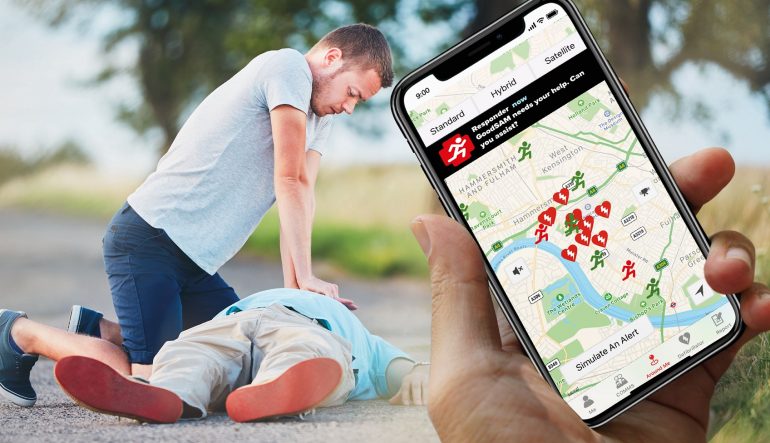The survival of someone experiencing an out-of-hospital cardiac arrest depends on a witness stepping in to help them. We call these people community first responders.
Say this someone is you. A sudden cardiac arrest will very quickly cause you to fall unconscious, become unresponsive and stop breathing normally.
If you’re lucky, you’re in a public place when this happens. Or if you’re at home, someone is nearby and sees what’s happening.
The out-of-hospital cardiac arrest chain of survival describes what needs to happen next in order for you to have the best chance of survival.
In the best-case scenario, the witness has recognised a cadiac arrest has occurred and called emergency medical services (EMS). They have quickly gotten hold of an external automated defibrillator (AED) and are performing CPR ahead of an ambulance arriving to take you to hospital.
The role of the bystander
We aren’t fans of the term bystander, which is typically used to describe someone who chooses to help when they witness an out-of-hospital cardiac arrest.
Both “bystander” and “witness” describe someone who passively stands by and watches everything happen.
Survival of an out-of-hospital cardiac arrest however, requires that person to be anything but passive. They need to be courageous and selfless, ready to step in despite not knowing what to do, or how to help you.
Related article: Early CPR and defibrillation critical to OHCA survival: Brian Haskins
A better description could be community first responder. Even that doesn’t do justice to how indebted survivors of out-of-hospital cardiac arrest are to their saviors.
Volunteer organisations that deliver a network of people poised to help in emergencies, share this gift for understatement.
One of our favourites is the global GoodSAM network. If you’re a GoodSAM volunteer, you’re usually a trained first responder such as a paramedic, police officer, or fire fighter.
These amazing people put themselves on-call during their own time, to respond to nearby emergencies.
GoodSAM volunteers save lives. They’re super heroes without the capes – although they do have an app.
GoodSAM volunteers and other community first responders like them demonstrate what a misnomer the term bystander really is.
Consider the Survival Gap. What happens in those critical minutes between someone experiencing an out-of-hospital cardiac arrest and the arrival of EMS means life to the patient.
We should celebrate any individual who, in those moments, chooses to step up, and step in.



